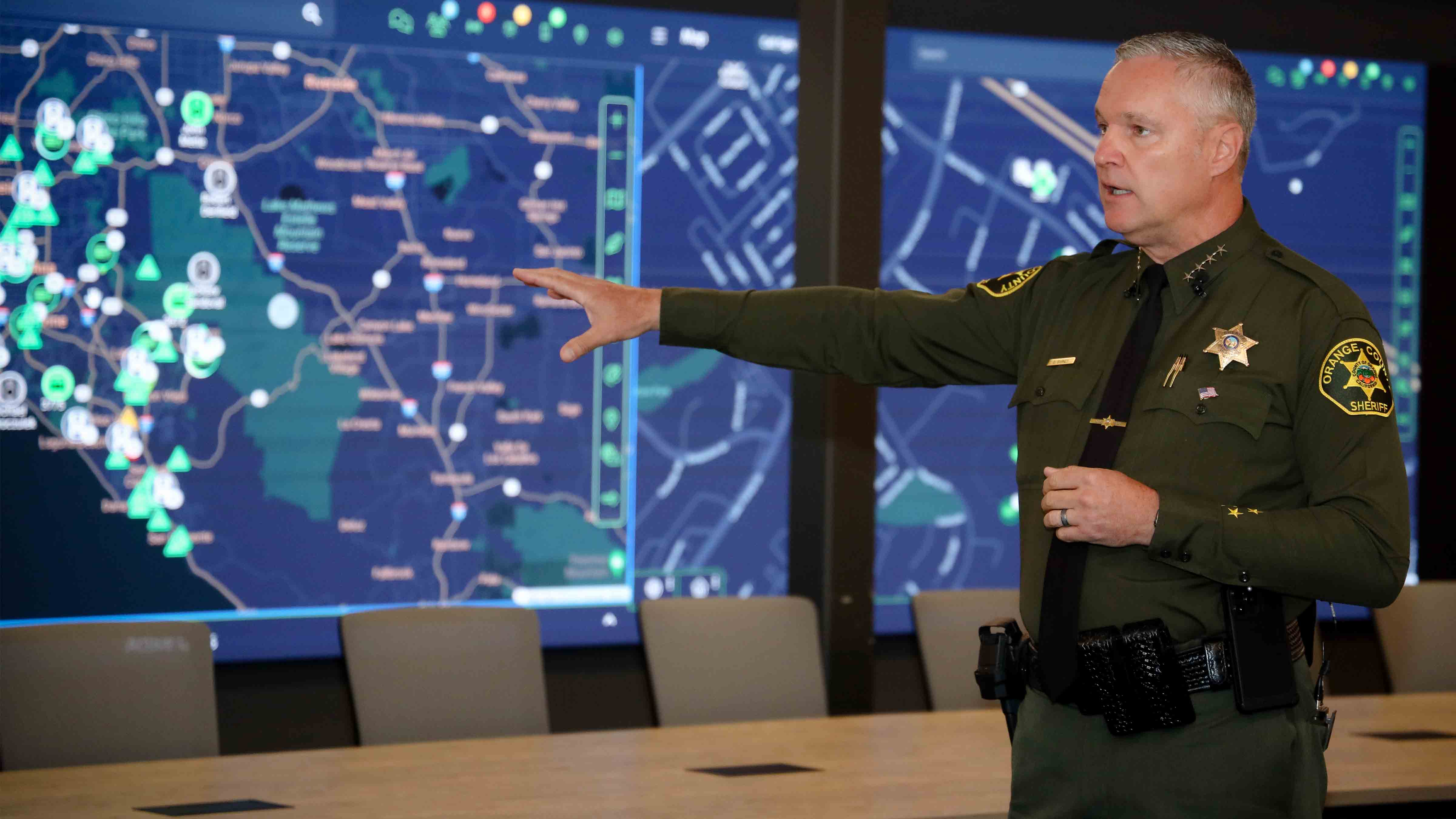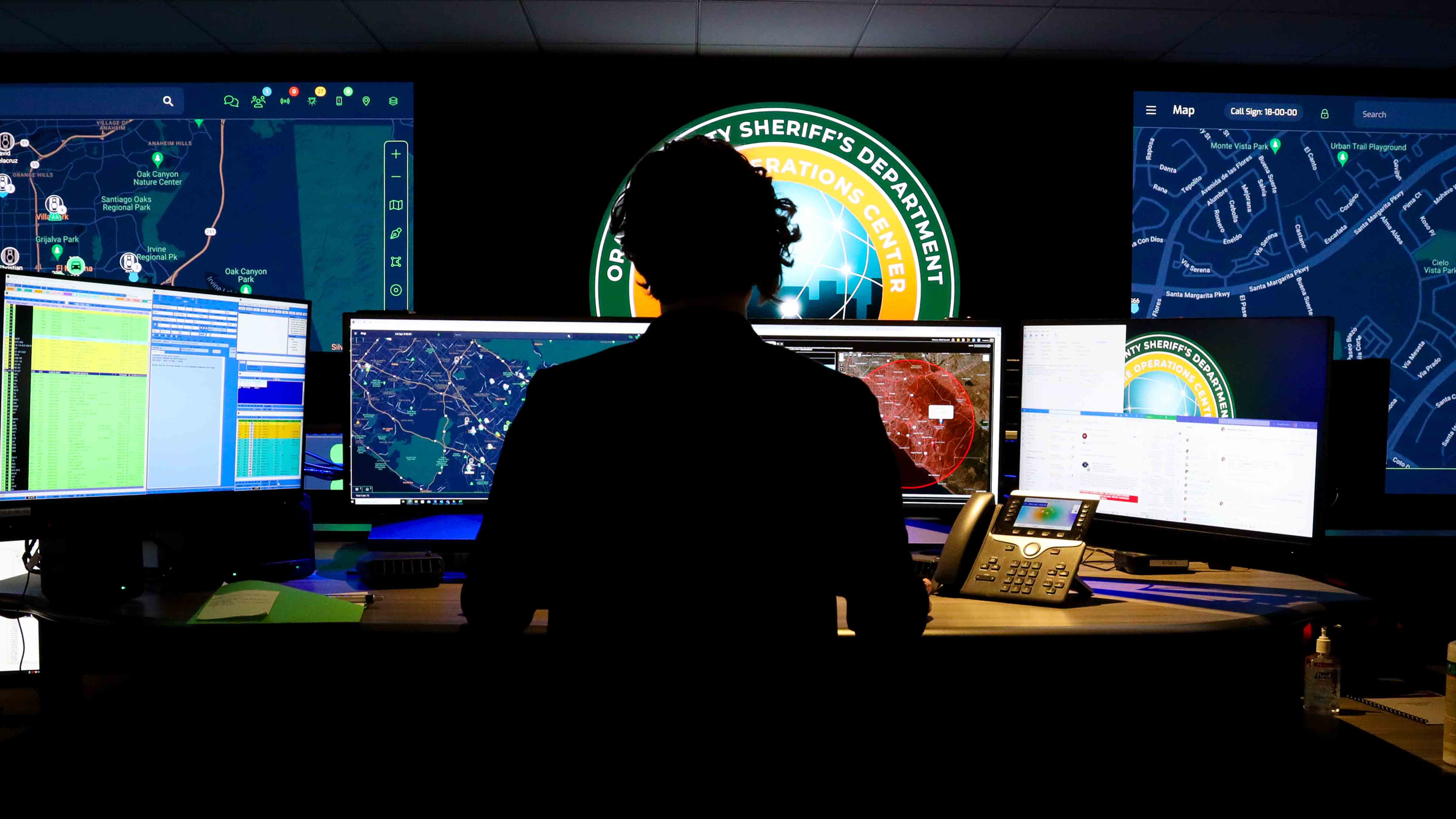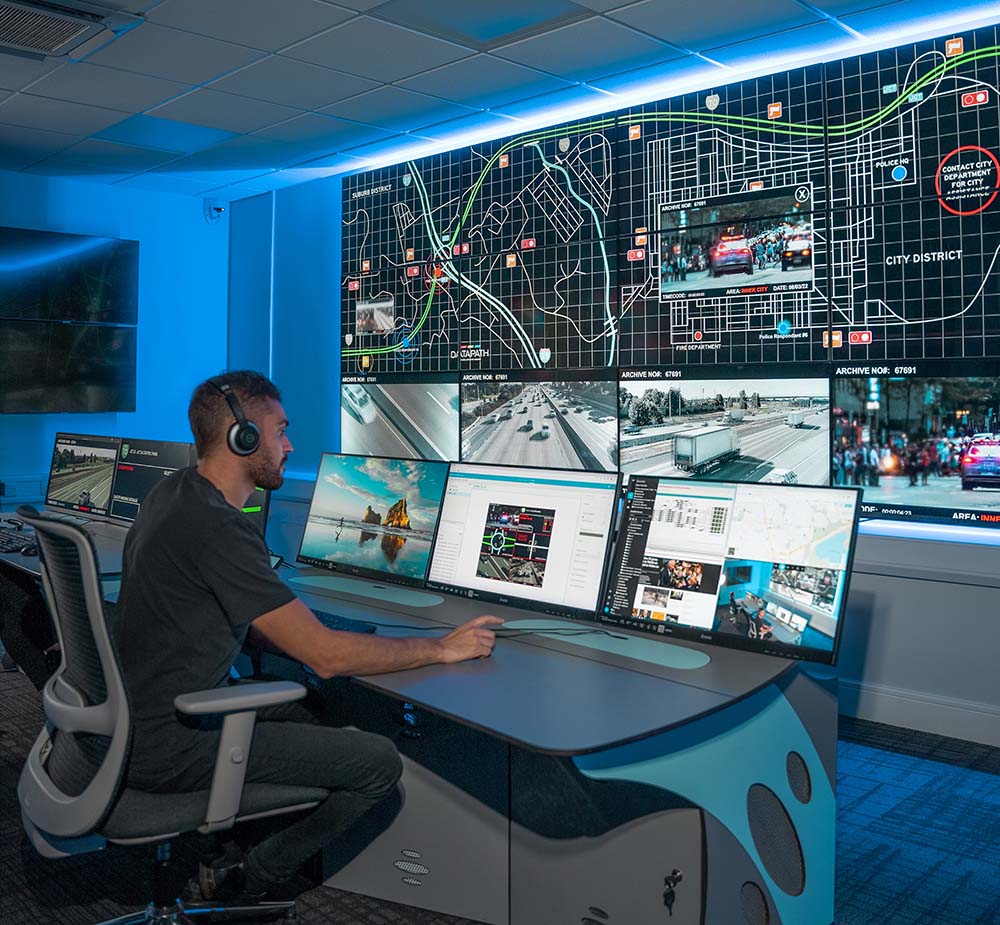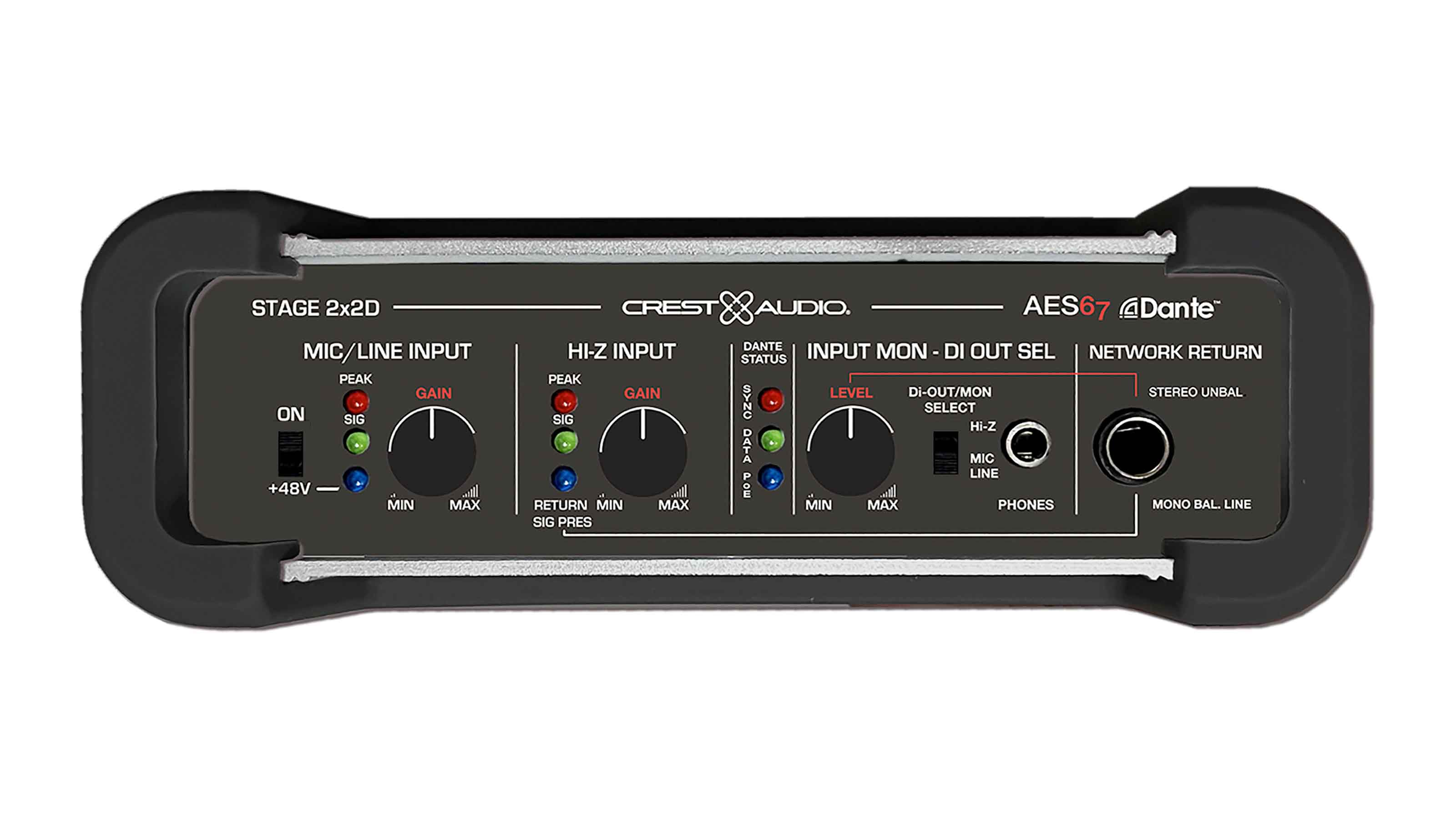Critical AV for Command and Control
Data management is essential in these high-stakes collaborative environments.

Back in 2020, California's Orange County Sheriff’s Department launched its Technology Division. The goal: Bring together a diverse range of resources to develop a consistent plan for how the department would advance technologically.
The division employs around 150 team members that oversee public safety dispatch and communications, infrastructure, IT, and security. As a primary facility within the organization, the Orange County Real Time Operations Center (RTOC) was charged with providing emergency response teams and law enforcement with the control and visualization tools that would enable them to manage critical events.
This mandated the need for technology that allowed for efficient collaboration across a multitude of sources and systems. After assessing the tools available, the department settled on RGB Spectrum's XtendPoint. The multi-user networked KVM over IP system provides unified control of multiple applications, information sharing, integration with video walls and remote operators, and remote monitoring and response for authorized users.
Dave Fontneau, chief information officer in the Orange County Sheriff’s Department Technology Division, explained that his organization sought out partners that would contribute to driving tech innovation at the RTOC—and solutions that would improve public safety and law enforcement operations. “XtendPoint gives us the flexibility to push and pull content anywhere across the county, ensuring seamless communication and rapid response during emergencies,” he said.
At Datapath, Mark Bohs, director of sales, Americas, noted that the variety of video sources feeding today’s command and control facilities—including IP cameras, news feeds, internet sources, and internal communications—drives the need for high-resolution displays. He also highlighted the demand for AV over IP distribution, as well as 10G networking that can accommodate the volume of data that’s being processed.

“[A] distributed solution of disparate content sources all being brought into [the] networked environment also requires technology that can keep track of all of the endpoints and centralize them within an interface that allows operators to access any and all appropriate sources, [and] lay out files [and] templates,” he explained.
Deciding on Displays
Over the last five years or so, LED displays have decreased in price, making them more accessible to a wider range of command and control rooms. Bohs argued that unlike video monitor walls, LED displays are bezel free, which makes them easier to watch. “This makes multiple content and bespoke templates and layouts easy to create, as well as providing a clearer viewing experience,” he said. Monitor cabinet sizes limit their orientation options in a space, whereas LED panels offer more flexibility when it comes to placement and positioning, he added.
A daily selection of the top stories for AV integrators, resellers and consultants. Sign up below.
“From a control room operator’s standpoint, an easily managed console is high on the list of priorities.”
Mark Bohs, Datapath
Stephen McNeil, account manager at Solutionz, has observed that a growing number of police departments are rolling out ROTCs thanks to what he calls a relatively low barrier to entry. For these spaces, the primary goal is to provide a video “canvas” that can display sources such as security dispatch and management dashboards linked with the IP cameras that are in the field, capturing images in different zones of a city, county, or region.
In this scenario, multiview is a key feature. “You can get this infinite control of the canvas over how small or large [you want] these individual windows to be,” McNeil said.
Matt Rinehart, VP of federal strategic accounts at AVI-SPL, noted that by bringing more data to a large-scale, centralized dvLED display, command and control centers can decrease the amount of gear required at operator workstations. “Where they used to have four, five, or more PCs or clients under their desk, in a best-case scenario all of that is virtualized now,” he explained.
This also results in quieter, cooler facilities. “I can have an HVAC zone right beneath that dvLED wall and draw that heat out of the room, [instead of] having all that heat flowing over the humans,” Rinehart added.
A Place for Projectors?
For certain command and control applications, projection-driven displays remain a good option. McNeil points to larger emergency operations centers (EOCs) or 911 centers as examples. Due to their size, these spaces tend to have fewer sightline issues in relation to projector hangs than, for example, smaller ROTCs with lower ceilings. Also, projectors may turn out to be more cost-effective than a dvLED that needs to be big enough to be seen by 100-150 viewers.
However, McNeil conceded that projectors are becoming less common, even in these environments. “They tend to be loud; they tend to put out a lot of heat,” he said.
There are also concerns related to projector failure. Bohs noted that it's relatively simple to swap out a faulty LED panel within a video wall. “Should the projector fail," he warned, "the facility is faced with a blank display rather than a dead pixel.” He also added that LED displays—which, in command and control centers, are usually running on a 24/7 basis—are more energy efficient, especially when they incorporate dimming systems that reduce their output during non-peak times.
That’s not to say that projection is on its way out for all command and control applications. Spaces featuring unique geometries are good candidates for these systems, according to Rinehart. Mobile facilities—such as those deployed for natural disaster response—still benefit from this technology, Rinehart noted. In these tough environments, data can be projected onto walls or even sheets or tarps. “There are still some great applications for projectors,” he said.
Eyes Everywhere
KVM interfaces offer a more ergonomic solution for operators who are tasked with accessing, managing, and monitoring multiple sources. “From a control room operator’s standpoint, an easily managed console is high on the list of priorities,” Bohs said. “KVM solutions give operators control of numerous displays and applications from a single mouse, ensuring smoother operations, saving important time, and reducing desk clutter.”

In their basic form, KVM systems can be used to control multiple computers situated on one desk. On an IP network, administrators may grant KVM permissions to authorized personnel only, which keeps sensitive data secure.
McNeil noted that operators can leverage KVM beyond their own workstations to the central video display. “I can take my mouse across that whole wall, click on a window, and now I’m controlling that space,” he explained. This functionality also applies to other workstations within the room. “It’s really taking KVM to the next level.”
There has been some element of videoconferencing capability in the majority of command and control center projects McNeil has been involved with. Sometimes it’s pretty basic—a soft codec, one camera, a microphone—but in other environments it’s integrated throughout the entire building. “It really varies case by case, but it’s there and it’s prevalent,” he said.
For McNeil, the evolution of command and control center technology has enabled organizations to more easily share information with those who need it—and fast. He cited policing as an example: In a standoff situation, drone camera footage that’s being viewed in an RTOC can also be fed to an officer sitting in his squad car, better equipping him to deal with the event.
“They can get eyes everywhere,” he said. “Before they even ask the witness that first question, they already have a huge amount of information because of these systems.”
Carolyn Heinze has covered everything from AV/IT and business to cowboys and cowgirls ... and the horses they love. She was the Paris contributing editor for the pan-European site Running in Heels, providing news and views on fashion, culture, and the arts for her column, “France in Your Pants.” She has also contributed critiques of foreign cinema and French politics for the politico-literary site, The New Vulgate.
